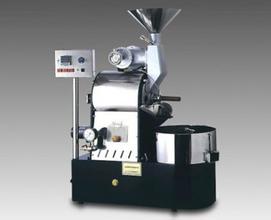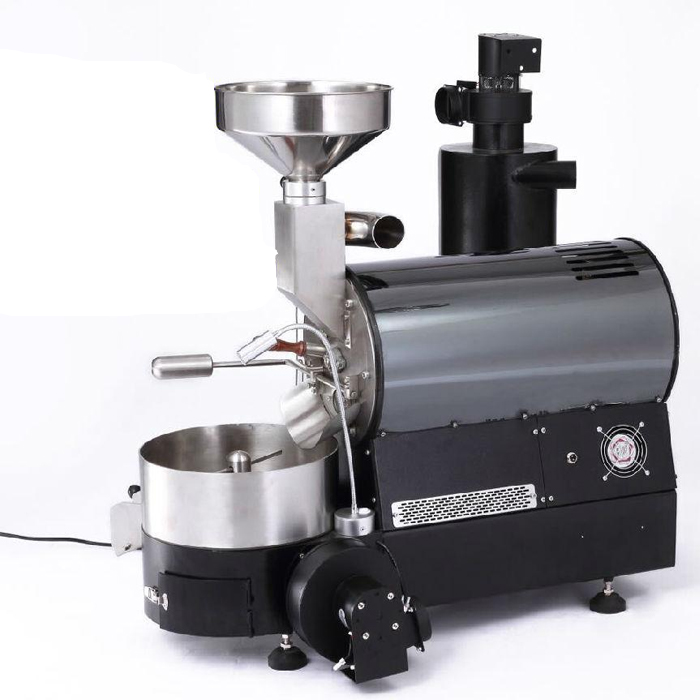Coffee roaster: how to solve the problem of pipeline blockage of coffee roaster

Pipe congestion is always a headache for professional coffee roasting. Coffee beans roast at the same time will produce oil fume, this oil fume is not only exhaust gas, but also mixed with a lot of silver dandruff, as well as dirt impurities carried by raw beans, as long as the coffee roaster continues to run, this kind of oil fume full of impurities and dandruff will continue to be produced and discharged, and the oil fume dandruff with high viscosity will gradually adhere to the surface of the object in contact, and will proliferate and thicken, resulting in obstruction of the exhaust pipe. Blocking does not need to wait until your pipe is completely blocked, as long as it accumulates to a certain thickness, it will greatly affect the baking quality of coffee beans and the performance in the cup.
Blockage can occur in any link, from the throttle, fan blades, dust collection buckets, static motors, to any smoke exhaust path! Often you have noticed all the places you think should be cleaned, and the blockage may still occur in places you do not expect. Serious blockage will cause all your baking data to fail, making your daily coffee roasting a dream because you can't taste what you should have, but uninvited what you shouldn't.
How can we detect the occurrence of congestion? When you find that one or more of the following symptoms appear, it is that obstruction may have occurred!
1. The heating rate deviates from the normal, and the temperature in the middle of the baking begins to rise faster than usual, and the more the tail, the greater the deviation.
two。 It tastes sweet, but it tastes like a mist.
3. Lack of clean brightness (brightness) tends to one of the following: a sweet, dull taste or a strong acidity on both sides of the tongue.
4. Some aromas can be smelled when they are ground (dry), but not in the mouth.
5. With salty taste, the plot ranges from very small to very obvious. The salty taste can be easily detected by using Espresso Cupping.
6. There is an unclean miscellaneous or astringent taste.
What should we do when we find that there may be symptoms of pipeline obstruction? Here are the cleaning steps you should take:
1. Stop work and flameout immediately and wait for the roaster to cool completely to room temperature.
two。 Remove and remove all exhaust pipe paths, gradually confirm whether there is blockage in the following units: roaster body (exhaust path, air door, fan blade), dust collection bucket (upper layer, middle layer, around funnel), all air duct paths (especially at turning points or diameter changes), static motor (air inlet and outlet, filter net, pole plate, exhaust fan), outdoor chimney line. All the places where the waste gas will pass need to be dismantled and checked.
3. Will block, hyperplasia dandruff place, regardless of the seriousness of the plot, all thoroughly clean.
4. After installation, the return to zero baking test program is carried out, and the new baking data is recorded according to the results of the return to zero test.
5. Set up the baking counter, return to zero and begin to record the number of baking ovens after cleaning.
6. In the cleaning operation, it is possible to use non-depilating towels, avoid using hard brushes, and pay attention to the integrity of the rubber band at the link during installation.
Source: Kang tasting Network
Important Notice :
前街咖啡 FrontStreet Coffee has moved to new addredd:
FrontStreet Coffee Address: 315,Donghua East Road,GuangZhou
Tel:020 38364473
- Prev

Technical operation of espresso: selection and grip of flower jar
There are many kinds of flower vats on the market, you can refer to the following points when you buy the size of ─, the common ones are 300ml, 350ml, 600ml, and then a little bigger, but it is generally not needed. The shape of the pot body ─ is generally a little wider at the bottom than at the top, but there are some wide and narrow in the middle, which is not conducive to milking, so it is recommended to be used as decoration. Choose and buy the flower jar on the market
- Next

Coffee roaster: what are the specific categories of common coffee roasting machines?
1. Hot air coffee bean roaster the hot air roaster uses a blower to suck in air, then lets the air pass through a heating coil to raise its temperature, and uses hot air as a heating source to bake coffee beans. hot air can not only provide the temperature needed for baking, but also use the power of airflow to stir coffee beans, killing two birds with one stone. Advantages: high thermal efficiency, fast heating, heating ratio of raw beans
Related
- What is the Philharmonic pressure? How to use Philharmonic pressure to make delicious coffee
- Why does a hand grinder have more fine powder than an electric grinder?
- In addition to the hot mom, what is the difference between the versions of EK43 | ditting and Mahdi ek43?
- What kind of equipment do you need to make coffee by hand? Introduction to novice starter cooking equipment tools
- Espresso needs to be ground how thick and thin scale entry Italian Coffee Machine Bean Grinder investigation and Grinding course
- How much does it cost to open a small private cafe? How much does it cost to learn coffee? How to operate it?
- The difference between the flavor characteristics of hand-brewed coffee and coffee maker is hand-brewed coffee really better than coffee maker? Can I use a coffee machine to make coffee beans by hand?
- The difference between 01 and 02 of hario v60 filter cup what is the difference between 01 and 02 filter cup opening and cooking flavor
- What's the difference between the smart cup and the French kettle? Which is better, the French kettle or the Smart Cup?
- What's the difference between a smart cup and a V60 filter cup? The difference between the taste of smart cup and hand-brewed coffee

